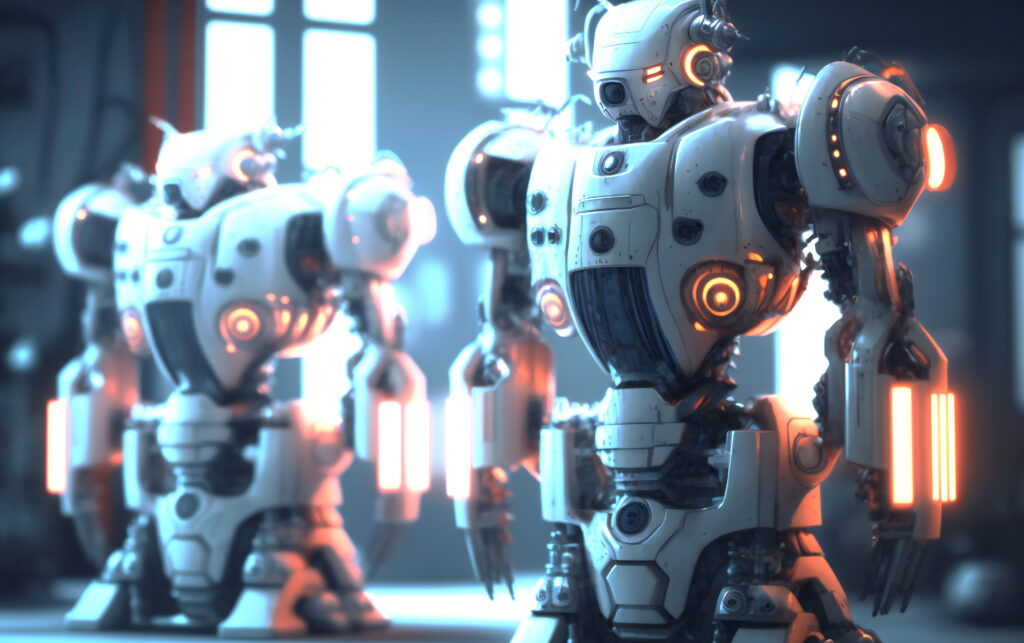Robots Dot to Dot Nattapong is an innovative fusion of traditional dot-to-dot drawing and advanced robotics, created by Nattapong, an artist and engineer. This concept transforms simple dot connections into intricate robotic designs, blending art and technology. It has gained popularity in educational and therapeutic settings, offering a unique way to teach robotics and improve cognitive skills. Nattapong’s work has redefined dot-to-dot art, making it a powerful tool for both learning and creative expression.
Table of Contents
The Technical Innovation in Nattapong’s Dot to Dot Robots
Nattapong’s Robots Dot to Dot is not just an artistic endeavor but also a showcase of technical innovation. By integrating robotics with the simple concept of connecting dots, Nattapong has created a system where robotic arms execute precise movements to form complex images. These robots are equipped with advanced AI and machine learning algorithms, allowing them to adapt to different designs and ensure accuracy. The combination of software development for pattern recognition and hardware calibration for movement precision makes this a cutting-edge application in both art and technology. This innovation has opened up new possibilities in fields like education and therapy, where these robots are used to teach STEM principles and improve fine motor skills.
Applications and Impact of Robots Dot to Dot Nattapong
The impact of Robots Dot to Dot Nattapong extends beyond art, influencing education and therapy significantly. In educational settings, these robots are employed to teach students essential STEM concepts in an engaging manner. By assembling dot-to-dot designs with robotic precision, students learn about robotics, programming, and engineering in a hands-on way. Additionally, the therapeutic applications of this technology are profound; dot-to-dot activities are used to improve concentration and fine motor skills in various rehabilitation programs. Nattapong’s robots add an extra layer of engagement, making these exercises more effective and enjoyable for users of all ages.
Art Meets Technology: The Creative Process Behind Nattapong’s Robots
Nattapong’s creative process in developing Robots Dot to Dot blends traditional art techniques with modern technology. Each design begins as a simple dot-to-dot outline, which is then transformed into a detailed robotic figure through careful programming and robotic execution. The process involves not just connecting the dots but also considering the artistic flow and the final image’s aesthetics. Nattapong’s studio is a hub of innovation, where sketches and prototypes evolve into sophisticated robotic artworks. This creative fusion has redefined what dot-to-dot art can achieve, pushing the boundaries of both artistic expression and technological capability.
The Role of AI in Enhancing Robots Dot to Dot Nattapong
Artificial Intelligence (AI) plays a crucial role in the advancement of Robots Dot to Dot Nattapong. The integration of AI allows these robots to not only connect dots with precision but also adapt to various patterns and designs dynamically. By leveraging machine learning algorithms, the robots can improve their accuracy over time, learning from each interaction to create more refined and intricate images. This adaptability is particularly valuable in educational settings, where students can see firsthand how AI influences robotics, making the learning process more interactive and engaging. Nattapong’s use of AI in his dot-to-dot robots exemplifies how technology can elevate traditional artistic methods, transforming them into cutting-edge educational tools.

The Cultural Impact of Nattapong’s Robots Dot to Dot Creations
Robots Dot to Dot Nattapong has had a significant cultural impact, bridging the gap between traditional art forms and modern technological innovations. Nattapong’s creations have not only sparked interest in the art and tech communities but have also influenced how we perceive the role of robots in creative processes. By merging the simplicity of dot-to-dot activities with advanced robotics, Nattapong challenges the conventional boundaries of both art and technology. His work has inspired a new wave of artists and technologists to explore the possibilities of integrating digital and physical mediums, leading to a broader acceptance and appreciation of robotics in everyday cultural expressions.
Future Prospects of Robots Dot to Dot Nattapong
The future of Robots Dot to Dot Nattapong looks promising as it continues to merge art and technology in innovative ways. With advancements in AI and robotics, these creations are expected to become even more intricate and personalized. Educational institutions are likely to adopt this technology more widely, using it as a tool to teach a broader range of subjects. In the art world, Nattapong’s work is paving the way for new forms of expression that combine digital and physical mediums. As this technology evolves, it will likely inspire further innovations in both robotics and creative industries, making Nattapong’s contributions increasingly influential.
Success Stories and Testimonials
Robots Dot to Dot Nattapong has garnered praise from educators, therapists, and artists alike. Teachers have reported improved student engagement and understanding of complex STEM concepts through the use of these robots. Therapists have noted significant progress in patients’ fine motor skills and cognitive abilities when incorporating dot-to-dot activities into their sessions. Artists and technologists have been inspired by Nattapong’s innovative approach, leading to new explorations in the intersection of art and robotics. These success stories highlight the broad impact of Nattapong’s work across multiple fields, underscoring the potential of Robots Dot to Dot as both an educational tool and a form of artistic expression.
Conclusion
In conclusion, Robots Dot to Dot Nattapong is a revolutionary concept that blends traditional art with modern technology, creating a powerful tool for education, therapy, and artistic innovation. Nattapong’s work not only redefines what can be achieved with dot-to-dot art but also opens new possibilities in robotics and AI. As this technology continues to evolve, its impact is likely to grow, influencing a wide range of fields and inspiring the next generation of creators and innovators.
FAQs about Robots Dot to Dot Nattapong
What is Robots Dot to Dot Nattapong?
It is an innovative fusion of traditional dot-to-dot drawing and robotics, created by Nattapong, where robots connect dots to form complex images.
How does Nattapong’s technology work?
The technology uses advanced AI and robotics to program robotic arms that connect dots with precision, transforming simple designs into intricate artworks.
What are the educational benefits of Robots Dot to Dot?
The robots are used to teach STEM concepts in schools, enhancing students’ understanding of robotics, programming, and engineering through interactive learning.
How can I get involved in learning or teaching with Robots Dot to Dot?
Educational kits and workshops are available, offering hands-on experience in building and programming these robots, suitable for learners of all ages.
